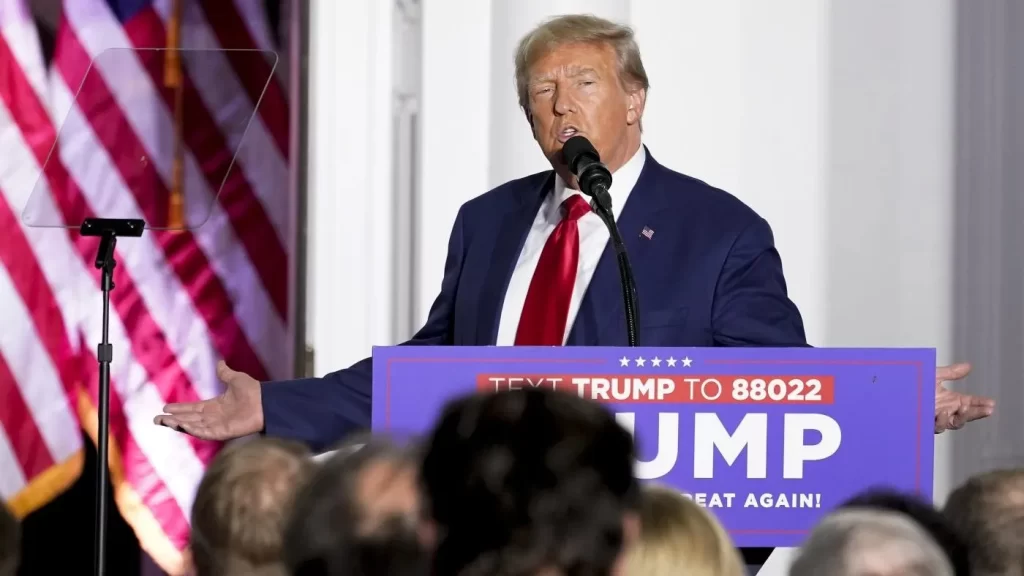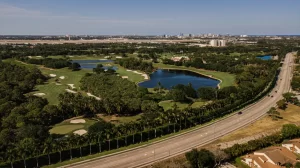Securing Golf Courses: The Challenges of Protecting Former President Trump
3 min read

Golf courses, particularly those owned by former President Donald Trump, have long posed significant challenges for Secret Service agents tasked with ensuring the former commander-in-chief’s safety. This issue has become even more apparent in light of recent security breaches and incidents.
Despite enhancements to Trump’s security detail following an assassination attempt earlier in the summer, these measures were insufficient to prevent another serious security lapse. Recently, a would-be assassin was apprehended within 500 yards of Trump’s golf course, armed with an AK-47 equipped with a telescopic sight. The difficulty in securing a golf course perimeter was a common thread in both incidents.
Golf courses inherently present unique security challenges. Their expansive, open layouts, often bordered by public roads and natural features like trees and hills, create numerous potential concealment spots for individuals with malicious intent. According to officials, the recent attempt on Trump’s life involved a suspect hiding in bushes along the golf course’s edge before being spotted by a Secret Service agent who noticed the barrel of the weapon.
Typically, when Trump plays at one of his golf clubs, the course remains open to the public, and nearby roads are not closed off. Secret Service agents, dressed in golf attire, patrol the area in carts both ahead of and behind Trump, preparing the scene several minutes before he arrives. Although Trump enjoys driving his own golf cart—a rare privilege for a sitting or former president—his cart lacks specialized protective features, despite sporting a presidential seal.
Security procedures include screening guests with metal detectors before they approach Trump. However, efforts to limit access to the president while he is at his golf club are often relaxed to accommodate his preference for interacting with club members. This balance between security and personal preference creates a complex dynamic that the Secret Service must manage carefully.

Trump International Golf Club in West Palm Beach, where Trump frequently plays, is particularly challenging due to its proximity to three busy roads—Kirk Road, Summit Boulevard, and Congress Avenue—as well as its close location to Palm Beach International Airport. During his presidency, Trump was often visible from across Kirk Road while golfing, though media access to nearby sidewalks was restricted. Since leaving office, these restrictions have eased, allowing the public to view Trump from sidewalks on Summit Boulevard and Congress Avenue.
In a recent briefing, Palm Beach County Sheriff Ric Bradshaw addressed the security concerns associated with protecting Trump. He noted that while Trump is no longer the sitting president, which limits the extent of security measures compared to when he was in office, future visits to the golf course may see increased security around the perimeter. “The level where he is at right now, he is not the sitting president,” Sheriff Bradshaw explained. “If he was, we would have had the entire golf course surrounded. But because he’s not, security is limited to the areas the Secret Service deems possible.”
Historically, other presidents have faced different security arrangements. For instance, during Barack Obama’s presidency, his golf outings were typically restricted to the course at Joint Base Andrews, a military installation with inherently tighter security measures. In contrast, President Joe Biden, who rarely golfs, has not faced similar security challenges related to golf courses.
The complexity of securing golf courses underscores the delicate balance between maintaining robust protective measures and accommodating the preferences of high-profile individuals like former President Trump. As incidents continue to highlight these challenges, it remains crucial for the Secret Service to adapt and refine their strategies to address evolving threats while ensuring the safety of those they protect.